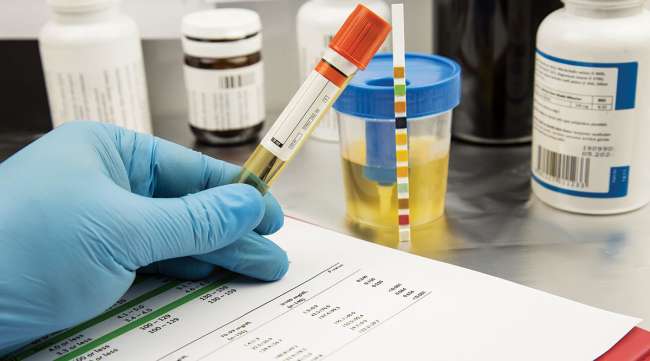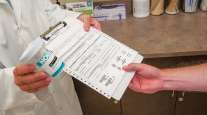Senior Reporter
FMCSA Retains Fleets' 50% Random Drug Testing Rate in 2025

[Stay on top of transportation news: Get TTNews in your inbox.]
Motor carriers must continue to conduct random drug tests with 50% of their truck drivers and random alcohol tests with 10% of their drivers in 2025, the Federal Motor Carrier Safety Administration announced.
These percentages have remained in effect since 2020, when FMCSA officials announced they were increasing the minimum annual percentage rate for random controlled substances testing for drivers of commercial motor vehicles from 25% of the average number of driver positions.
While the random drug test rate requirement remained the same for FMCSA, the Pipeline and Hazardous Materials Safety Administration determined that the minimum random drug testing rate for covered employees will increase to 50% during calendar year 2025. The new percentage means carriers must randomly test one of every two drivers they employ.
RELATED: New Drug & Alcohol Clearinghouse Regulations Take Effect
“The FMCSA administrator must increase the minimum annual random testing percentage rate when the data received under the reporting requirements for any calendar year indicate that the reported positive rate is equal to or greater than 1.0%,” the agency said.
Under this performance-based system, when the minimum annual percentage rate for random controlled substances testing is 25% and the data received under the reporting requirements for any calendar year indicate that the reported positive rate increases to at least 1%, FMCSA may increase the testing rate to 50%, the agency said.
The Drug and Alcohol Clearinghouse provides essential information for CDL and CLP holders under FMCSA’s Drug and Alcohol Testing Program. Stay compliant and informed: https://t.co/iiYMVEVYJd pic.twitter.com/n2LgW76gFf — FMCSA (@FMCSA) December 27, 2024
FMCSA’s final rule, “Controlled Substances and Alcohol Use and Testing,” published in 2001, set up the process by which the agency determines whether the minimum annual percentage rate for random testing should increase or decrease. The final rule stipulated that the decision to increase or decrease the percentage rate would be based on the trucking industry’s overall positive random controlled substance test rate, as reported by motor carrier employers to FMCSA.

Lyles
“The Department of Transportation’s decision to maintain the random drug testing rate at 50% for FMCSA-regulated employers is unsurprising,” said Brenna Lyles, senior director of safety policy for American Trucking Associations. “The federal regulations governing these rates allow the testing threshold to drop below 50% only if positive test results account for less than 1% of industry drug tests for two consecutive years. Additionally, with consistently high rates of marijuana positives and an upward trend in employee refusals reported to the Drug and Alcohol Clearinghouse, we would not expect a decrease in the required testing threshold.”
Lyles added, “These statistics underscore the importance of ongoing vigilance to ensure safety in our industry and on our highways.”
RELATED: ATA Critical of Proposed Federal Downgrade of Marijuana
Want more news? Listen to today's daily briefing above or go here for more info
“Unfortunately, it’s performance based,” said Thomas Bray, senior business adviser and editor at J.J. Keller & Associates. “The FMCSA requires certain carriers to send out surveys, and you have to reply with the [Management Information System] report, which is based on your drug and alcohol testing for the previous year.”
The agency compiles the reports from the carriers and looks at the national positive rate for drug and alcohol tests, Bray said.
“For trucks, if it’s below 1% for two consecutive years, the testing rate drops to 25%,” Bray said. “That’s significant, so all the cost for running the program basically gets cut in half. But that has to happen for two consecutive years.
“We haven’t done that. We’ve been hanging around 1.1% or 1.2%. The bottom line is nothing changes. So if have 300 drivers, you have to do 150 random tests over the next 12 months.”




